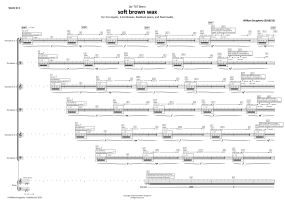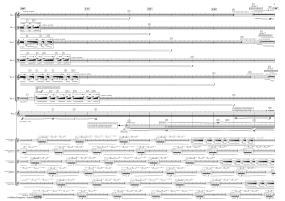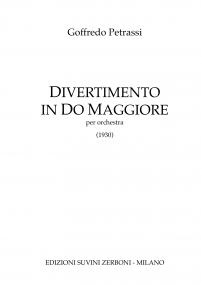soft brown wax
ISMN : 979-0-2325-4316-1
- Login to create your own lists
This piece is the first abridged version of a series of works to engage with the sounds of disappearance. At the center of this work is an 1888 recording of “Moses and the Children of Israel” from George Friedric Handel’s oratorio Israel in Egypt sung by “a chorus of 4000 voices recorded with phonograph over 100 yards away.” It was recorded on Edison’s paraffin (wax) cylinder by Colonel George Gouraud, a foreign sales agent for Thomas Edison on June 29th at The 1888 Ninth Triennial Handel Festival at Crystal Palace, London. In essence, this early recording process involved sound waves moving a diaphragm, which would in turn wear physical grooves into the wax cylinder as it was slowly turned. Due to the relatively soft nature the wax cylinder, every time the recording was then played back it was degraded, adding noise and other artifacts. After usually a few dozen or so plays, the recording would be completely worn away, obscuring the recorded sound, leaving just a layer of noise. (At this point, a mechanism could shave down the wax cylinder and a new recording could be made). Rather than focusing on the content that this early recording technology was meant to capture, this work focuses on the sound of erasure – the noise elements that create intertwined palimpsests with the original recorded material. Recorded only days after the death of German Emperor, Friedrich III, this recording is an uncanny window into the past. But perhaps even more spectacular is its fragility, its ephemerality – the things which make this recording, with all its wonderful noise elements, so much more complex and striking than the original source.
Trombone (3)
Piano
Fixed electronics
Pages - 28







